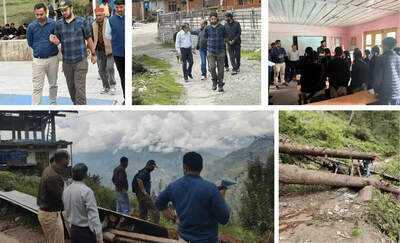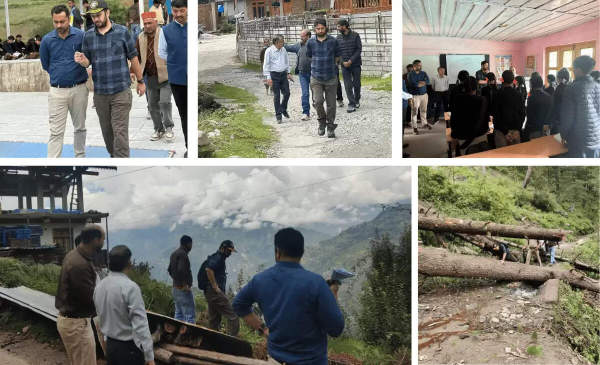
 Mandi DC's Effective Leadership Amidst Disaster
Mandi DC's Effective Leadership Amidst Disaster
Following the catastrophic floods and landslides in Himachal Pradesh, a notable disparity has emerged in the relief efforts between Bali Chowki in Mandi district and Banjar in the neighboring Kullu subdivision. While Bali Chowki has experienced prompt and organized relief initiatives, residents of Banjar express dissatisfaction with the slow and poorly coordinated government response.
Local residents attribute this difference to the effective leadership and coordination from district officials. In Mandi, Deputy Commissioner Apoorv Devgan has taken a hands-on approach, overseeing evacuation efforts, ensuring timely distribution of essential supplies, and coordinating with state agencies to restore vital services. Conversely, Banjar's recovery efforts seem to be lagging, with villagers still awaiting consistent aid and safe road access.
Bali Chowki, one of the areas hardest hit by the disaster, faced severe landslides and extensive damage to homes and infrastructure. However, relief camps were set up within days, roads were cleared for essential travel, and medical assistance was promptly provided.
Survivors from surrounding villages reported timely deliveries of ration kits, tents, blankets, and medicines, significantly reducing the risk of hunger and disease. A collaborative effort among revenue officials, local volunteers, and NDRF personnel ensured that no family was overlooked.
In a statement, DC Mandi Apoorv Devgan emphasized that his team has been tirelessly working around the clock to facilitate swift rehabilitation.
"Our officers and staff have been on duty 24/7 since the disaster occurred. We have restored power, mobile networks, and road connectivity, delivering essential goods directly to residents. I personally visited the most remote areas, such as Gada Gussaini, to ensure that assistance reached every household in need," he stated.
Residents credit this proactive strategy for the quicker return to normalcy in Bali Chowki.
Just a few kilometers away in Kullu district, the situation in Banjar is markedly different. This valley, also severely impacted by landslides and floods, has faced disrupted communication and delayed relief efforts.
Residents report that food packets and tents have been sporadic, and medical assistance often arrives late. The restoration of National Highway 305, crucial for Banjar, has been slow, exacerbating the isolation of numerous villages.
"The disaster here is unimaginable, but the pace of assistance has been frustratingly slow," lamented a villager from Banjar. "Seeing Bali Chowki recover makes us wonder why Banjar has been neglected."
The contrasting experiences of these two subdivisions underscore the impact of strong administrative leadership on disaster response. In Bali Chowki, the DC's commitment to being present on the ground, transparent communication, and rapid resource mobilization has resulted in effective relief efforts.
In contrast, the apparent lack of urgency and coordination in Banjar has led to increasing frustration among its residents. With winter approaching in the high-altitude region, delays in rehabilitation could exacerbate the humanitarian crisis.
The Himachal government is now under pressure to adopt Bali Chowki's successful relief model in Banjar and other struggling areas. Locals believe that swift action, accountability, and improved inter-departmental coordination are essential to address the disparities.
While Bali Chowki serves as a model of effective governance, Banjar stands as a stark reminder of the consequences when relief efforts fall short.